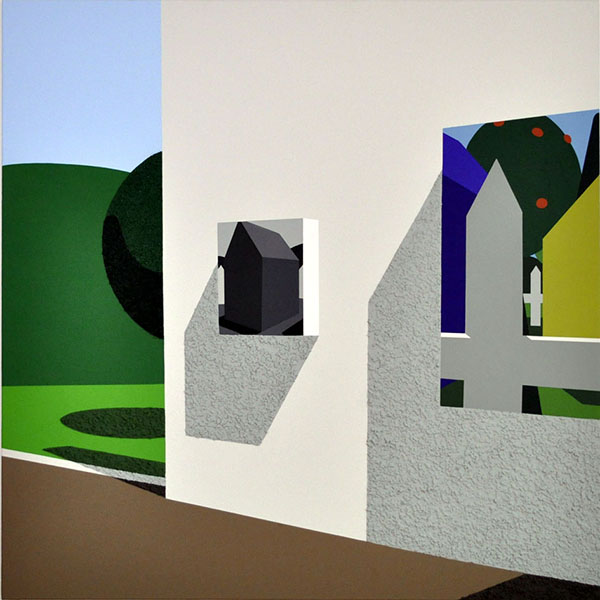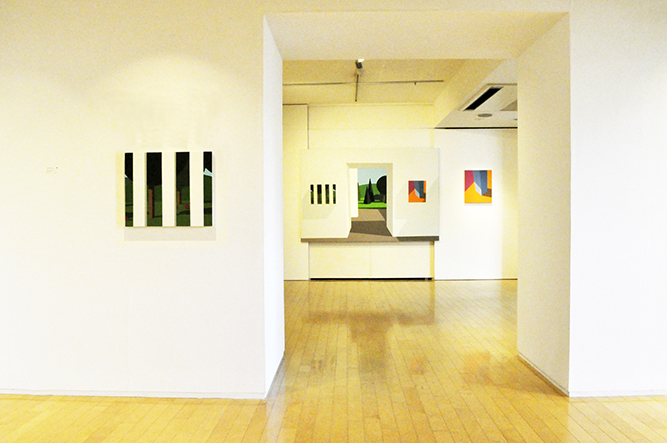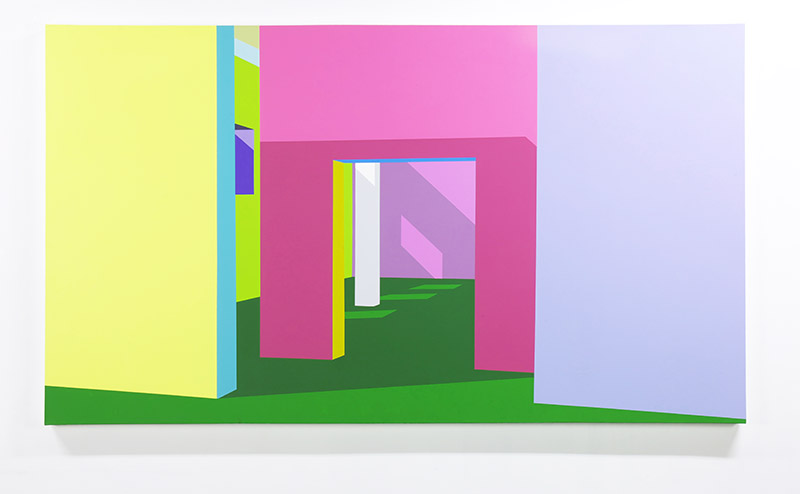Exhibition
Iku Harada: One Window and Awaking Garden
2013 May 2 (Fri) - May 19 (Sun) 2013
| Date | 2013 May 2 (Fri) - May 19 (Sun) 2013 |
|---|---|
| Hours | 11.00 - 19.00 (closed on Mondays) |
| Venue | Art Front Gallery |
| Reception | May 2 (thu) 18.00 - 20.00 |
| artist at the gallery | artist will be at the gallery in the afternoon of May 11(Sat), 18(Sat), 19(Sun) |
Painting is a window connecting the mundane real world with somewhere non-existent. Ever since Brunelleschi demonstrated mathematical perspective in the early 15th century, painters have created virtual spaces on two dimensional planes, proposing them as having depth, like a stage. The work is a kind of trompe-l'?il existing across the real and the virtual. In the Renaissance and Baroque eras, wall paintings were made in churches to look as if the incarnate Jesus Christ were really there. Painting in general changed in the Modern age, when two-dimensional paintings became more independent of three-dimensional architectural spaces. Yet even now, much painting still uses perspective to offer a window onto elsewhere.
Iku Harada creates computerised virtual reality spaces, with houses and parks. She then creates scenes from that world in paint. There are trees and even a gallery with paintings exhibited. Computerised scenes are not real, without depth of the atmosphere, and are deprived of ambivalent gradation of colors caused by different lights in the real world. These are classical paintings insofar as they show virtual-reality views, but they are first created by computer. Even in her virtual world, the sun rises and shadows move with the passage of time. Harada replaces her computer-generated virtual image with a painted canvas, existing in a real world.
Harada is not uninterested in the real world, for her technique is yet more complex. She puts her physical paintings into a gallery space, not an actual gallery, but one constructed in a virtual world, and she then paints real scenes of her exhibitions. Once those scenes are hung on real walls in real spaces, painting suddenly starts to appear like a window again. The floors and walls drawn in paintings start resonating with the real floors and walls. The complexity is accelerated further when the original painting is hung next to its representation. One feels a certain distortion of space, or an extreme, three-dimensional trompe-l'?il.
One of Harada’s works is an upward view of windows. We view the scene at a right-angle, capturing that line of sight. The vanishing point of the painted perspective is obviously different from that in the real world we inhabit. We experience an insurmountable twisting between pictorial space and the real world.
The modern movable canvas or panel can be hung anywhere, and painting has lost its spatial rootedness. An interesting feature of Harada’s work, however, is the way she bridges the real and the virtual with a power that playfully dismantles that very system ? that is, the long-venerated assumption of representational painting as showing a window onto somewhere non-existent. When a virtual window is drawn, exactly as a virtual window, as Harada does them, with intent to distort and twist, and intent to present her work in a real world, then painting can take on a new rootedness in site.
Toshio Kondo, Art Front Gallery

Home - White Cube, acrylic on canvas, 1167 x 1167 mm
One of the typical work by Iku Harada. The artist brought in her two paintings into vertual gallery space inside her PC grapgic world, and painted a scenery of the gallery onto new canvas. The real works, and vertual gallery space, and the real work dipicting the vertual gallery space coexist in the exhition, and altogether creates a strage and interesting exhibition space.

exhibition view at Art Front Gallery.
Small work on the left hand is from a scenery in the artist's virtual landscape. The aritist puts this real work in her vertual world again and drew a scenery shown as the center piece.






